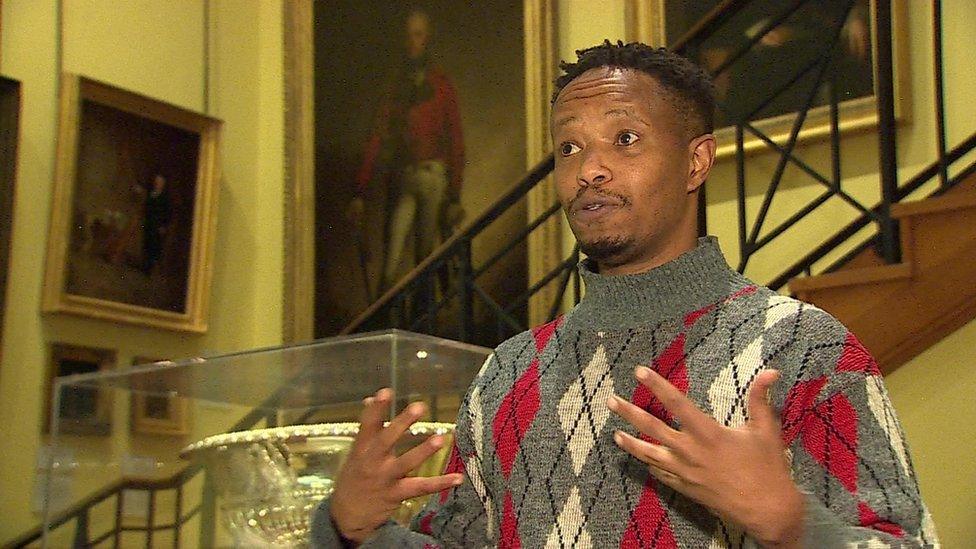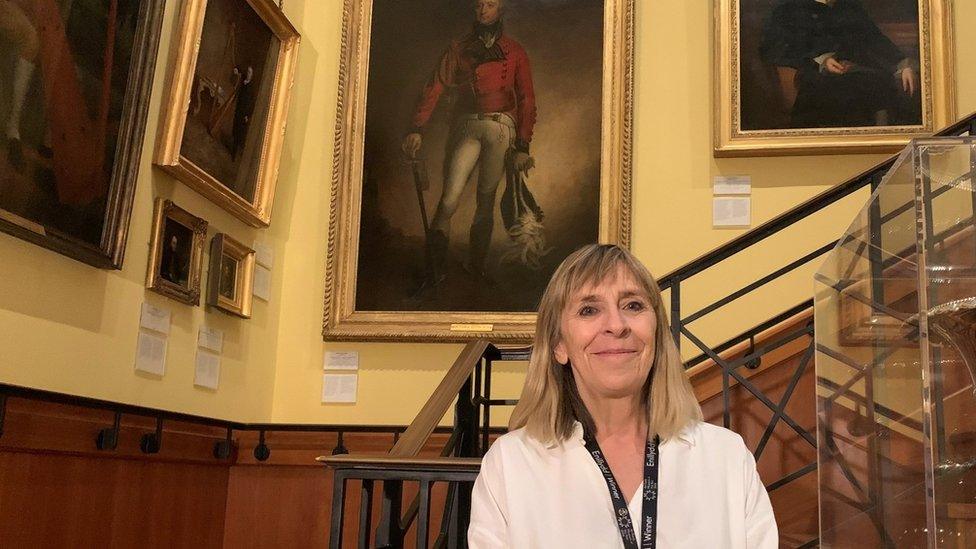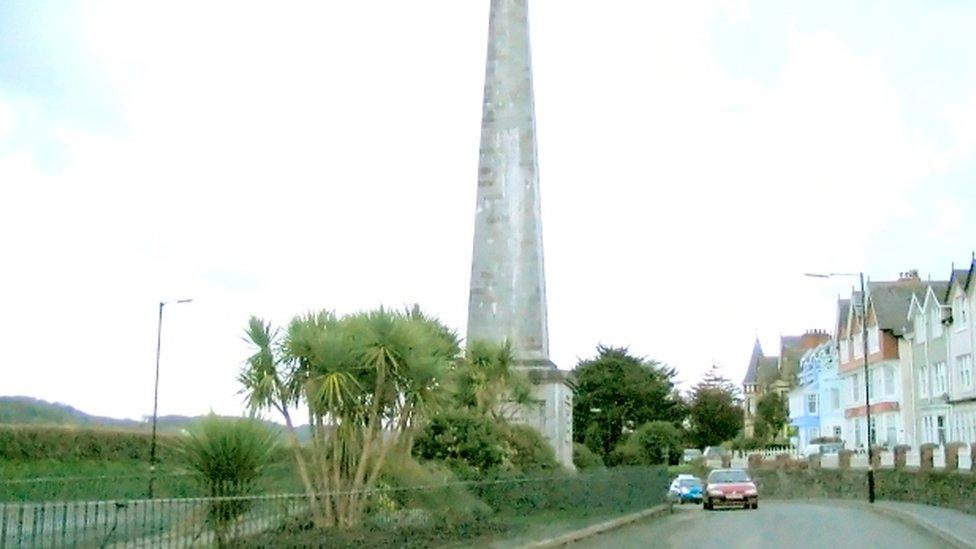Black history month: Slave owner Picton's portrait to be 're-framed'
- Published

Picton's reputation as a tyrant in Trinidad was well-known before his death
A portrait of Welsh slave owner Sir Thomas Picton labelling him a hero will be "re-framed" with more context given about his life, National Museum Wales (NMW) has said.
A group is advising the museum on the future of the painting, which is in one of its galleries in Cardiff.
Picton has been celebrated as a hero who died at the Battle of Waterloo.
But as governor of Trinidad he abused the slaves he owned, and was known as a tyrant even at the time.
A statue of Picton was boxed up at Cardiff's City Hall earlier this year, while Carmarthenshire council is considering the future of Carmarthen's Picton monument.
Picton, who was born in Haverfordwest in 1758, was remembered with pride by many but his reputation as a tyrant in Trinidad was well known before his death at Waterloo.
Scrutiny of the memorials to Picton has intensified since the growth of the Black Lives Matter movement, and Cardiff council voted in July to remove a marble statue of him from its Hall of Heroes at City Hall.
Deciding Picton's legacy

Fadhili Maghiya says "history should be told in its complexity"
National Museum Wales called on the Sub-Sahara Advisory Panel (SSAP) to decide the future of its large portrait of Picton, which currently hangs in the Faces of Wales gallery inside the Cardiff museum.
Its director, Fadhili Maghiya, said the painting should remain on display but with added detail about Picton's actions as a slave owner.
"The same day that Cardiff council were voting to remove the statue of Picton, we came to a decision that we want to re-frame Picton and to tell the story of Picton in his whole complexity," he said.
"We are not about the erasure of culture, or the element of removing things for the sake of removing things because of their historical significance.
"We believe that history should be told in its complexity, and in its good, bad and ugly way of being presented."
Mr Maghiya said Picton's story needed to be re-evaluated.
"The story of Picton has certainly been depicted as someone who is a hero.
"He is revered here in Wales. There are streets and buildings named after him.
"But people don't really know the story of Picton in full, other than as this heroic character.
"And so we wanted to tell the story in its full length, looking at Picton's role in the slave trade and especially as governor of Trinidad and what he did there during that time."
Picton's statue in Cardiff's City hall was boxed off earlier this year
What did Picton do in Trinidad?
Picton had long been remembered as the highest ranking British officer to fall at the Battle of Waterloo in 1815.
But as governor of Trinidad in the 1790s and early 1800s, he authorised the use of torture on local people, including 14-year-old Luisa Calderon who was accused of stealing. The incident led to him being ordered to return home to stand trial in London. He was convicted but later had the decision overturned.
It damaged his reputation at the time, with the Duke of Wellington describing him as "a rough, foul-mouthed devil, but very capable". It was his performance on the battlefield which led to his veneration by some, and his death prompted a flurry of memorials including the obelisk in Carmarthen.
The painting of Sir Thomas Picton which hangs in the National Museum in Cardiff was a gift from the Earl of Plymouth in 1907 but is much older, and is believed to have been hung in the Royal Academy in London in 1816.
The portrait's future

Kath Davies said they had also identified other objects with links to the slave trade
National Museum Wales director of collections, Kath Davies, said it wanted the SSAP to decide on the future of its painting.
She said: "We do recognise that we have to look again at how we display Picton and we agreed as a museum that perhaps the voices, the curatorial voice, should lie elsewhere on this occasion.
"There are a number of ideas under consideration, and the group is taking its time to consider every angle.
"But certainly there will be a re-framing of Picton. We are hoping perhaps to incorporate the re-display of Picton with other work the museum has been doing in relation to the BLM protest, and the collections we amassed by attending those protests and asking the attendees to share their placards and their banners."
Victorian collectors
Ms Davies said the museum had also identified other objects in its collection with links to the slave trade and the British colonisation of overseas territories.
"We are aware that there are complex areas within the collection, and at the moment we are developing a charter to explore how we can de-colonise our collections.
"Perhaps the natural assumption is that we would expect the problems to lie within the great art collections, but actually even delving as far as we have done so far, we are unearthing some issues in relation to our natural sciences collection.
"Many of the great Victorian collectors, and collectors of the early 20th Century, were from families that profited from the slave trade. So it is a very complex issue."
- Published24 July 2020

- Published12 June 2020
